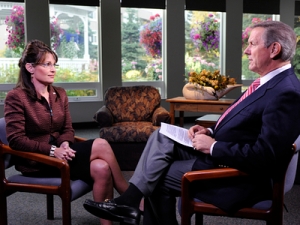
A CHF International loan officer and her client
Among some in the microfinance community, there is almost a reflexive tendency to dismiss profit as a bad thing, a corrupting force that causes microfinance institutions (MFIs) to abandon the social mission that underlies their reason for being. I have thought a lot about the issue over the last few months and have seen a lot of upsides and downsides to the different arguments. But more and more I have come to the conclusion that the two are really inseparable. The idea that higher interest rates that produce extra income beyond what is needed to just continue doing business is exploitative to the poor belies the priorities of microfinance clients. Interest rates are important in their decision-making, but more paramount is receiving a good product with attentive service from the loan officers and the ability to continue taking loans. When higher interest rates give MFIs additional capital to pay their employees higher salaries, expand operations to new regions, and invest in technology that enhances their ability to offer their services on-time and on a larger scale, the end result is more capacity serving a larger market. I will address some of the points one-by-one.
 Burma is a strange country. It feels like the clock stopped in the 1950’s, and most forward progress along with it. In the capitol city of Rangoon, everything is old – the cars, the buildings, the infrastructure, the money. And this is the capitol, where most of the wealth in the country is concentrated. Very little has been invested in modernization, mostly because it is tightly controlled by an authoritarian military junta that keeps the country isolated from the rest of the world. Foreign Policy just included the country in its list of the 20 least free places on earth. With the exception of other reclusive nations and kindred spirits, like North Korea, and trading partners trying to gain access to the country’s abundant natural resources, Burma keeps its distance. A fraction of the money coming from the lucrative contracts with neighboring Asian countries for oil and gas exploration is reinvested in developing the country. Despite money coming in, the country has its share of problems.
Burma is a strange country. It feels like the clock stopped in the 1950’s, and most forward progress along with it. In the capitol city of Rangoon, everything is old – the cars, the buildings, the infrastructure, the money. And this is the capitol, where most of the wealth in the country is concentrated. Very little has been invested in modernization, mostly because it is tightly controlled by an authoritarian military junta that keeps the country isolated from the rest of the world. Foreign Policy just included the country in its list of the 20 least free places on earth. With the exception of other reclusive nations and kindred spirits, like North Korea, and trading partners trying to gain access to the country’s abundant natural resources, Burma keeps its distance. A fraction of the money coming from the lucrative contracts with neighboring Asian countries for oil and gas exploration is reinvested in developing the country. Despite money coming in, the country has its share of problems. 




